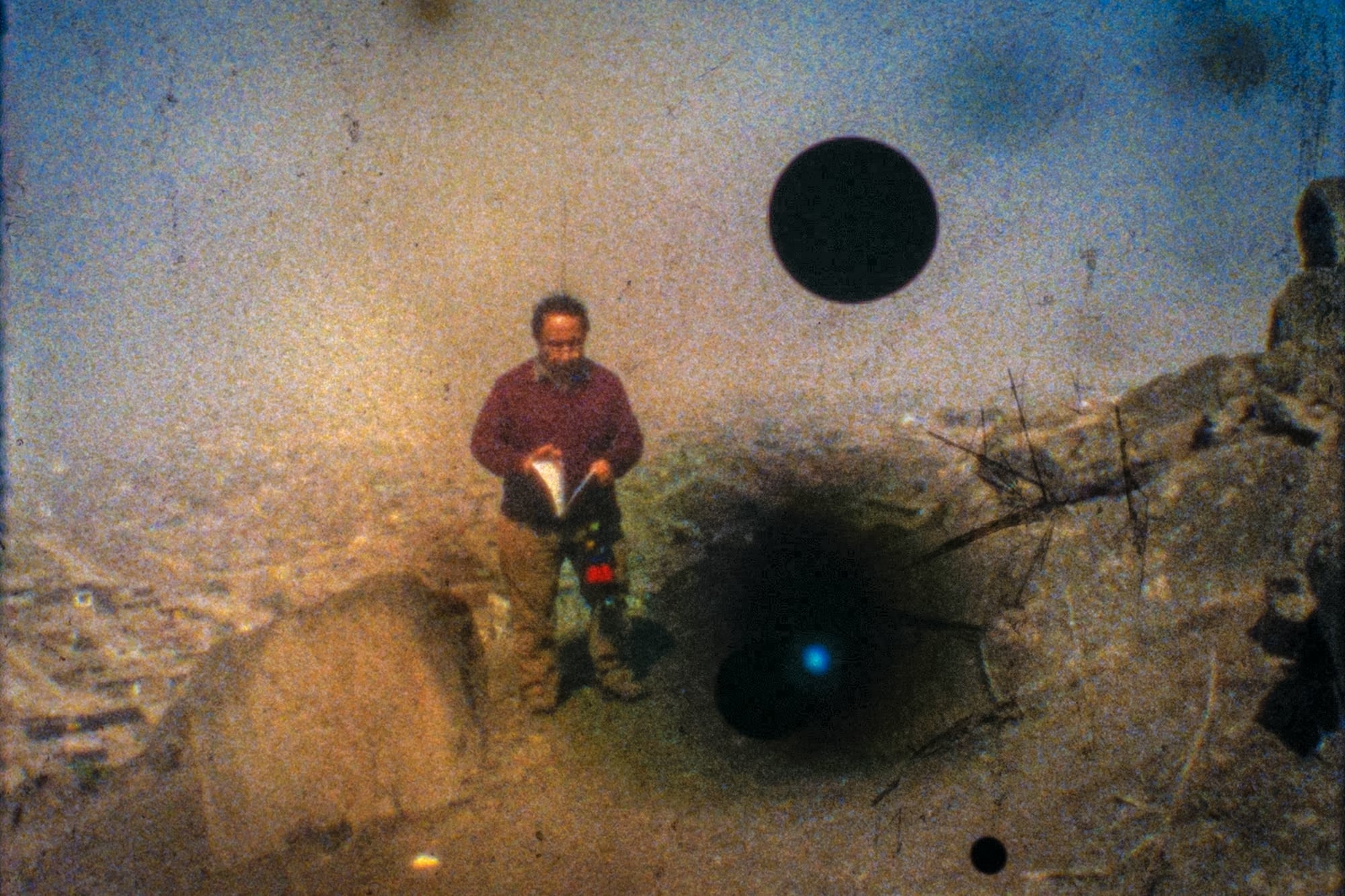
Saying what has been kept quiet for too long: cinema and memory to overcome the crisis
El Polvo ya no Nubla Nuestros Ojos is a short documentary that gathers testimonies of victims of significant conflicts in Peru’s recent history. Shot in Super-8, this work by Colectivo Silencio explores political violence from all sides: it explores issues such as racism, sexism, labor exploitation, and the murder of environmental leaders, offering a choral story that sheds light on the implications of the current crisis in the country. We talked to Fernando Vílchez, a founding member of the collective.
By Alonso Almenara
For Fernando Vílchez, the renowned author of the documentary film Su Nombre es Fujimori (2016), it is absurd to look for the origin of the social outburst that Peru is experiencing only in conjunctural problems. It is a crisis that has been going on for a long time.
For this reason, he believes that Peruvians need to do memory exercises. In particular, they need to listen to the victims of the social conflicts accumulated in the country’s recent history, whether they are victims of racism, sexism, or the neoliberal extractivist model.
In his medium-length film La Espera: Historias del Baguazo, Vilchez explored the events on June 5, 2009, in “La Curva del Diablo,” a road in the Amazon region of northern Peru. For weeks, the road was blocked by Awajún natives to prevent mining exploration on their land. In the incident known as the Baguazo or Bagua massacre, twenty-three policemen and ten civilians died. Although journalistic investigations have determined that a National Police attack caused the confrontation to unblock the road, the Peruvian justice system has not yet prosecuted any politician about this event.
For Vílchez, cinema must buy these fights. Moreover, it is an art that is called to be a fundamental piece in the construction of historical memory because it is capable of recording the moment, invoking presences, and interrogating the ghosts of the past. This is what the Peruvian filmmaker explores as part of the Silencio Collective in the documentary short film El Polvo ya no Nubla Nuestros Ojos (2022). A collaborative work in which artists and activists Lady Vinces, Ana Karina Barandiarán, Carla Amaro, Luis Tirado, César Vargas, Vero Ferrari, Walther Maradiegue, Mayra Villavicencio, Christian Ñeco, Náyarith Gastulo, and Martín López also participated.
Shot in Super-8 format on location in Lima, Chiclayo, and Pucallpa, the film gathers testimonies of social fighters and victims of violence from different periods and regions of the country, read by relatives or people linked to the authors of the texts. Among them is Pacha Sotelo, the older brother of Inti Sotelo, one of the two young men killed by the police during the mobilizations of November 14, 2020, in Lima. Pacha reads a post dedicated to his brother that was published on a Facebook page created in honor of the Bicentennial Youth. He is standing on a corner charged by the events: the intersection of Nicolás de Piérola and Abancay avenues, where Inti died, and where today stands a memorial (vandalized three times by the police).
In another scene, we hear what environmental activist and Asháninka leader Edwin Chota wrote shortly before timber traffickers murdered him in 2014. Chota fought for the legal recognition of his community’s territory and against illegal logging in the Amazon forests; in his letters, he gives an account of the dangers to which he is exposed and asks for security for his life. The text is read by Diana Ríos, a Saweto activist and one of the primary references to the environmental struggle in northern Peru.
There is a particular scene that I will not be able to forget. We hear text messages from Jovi Herrera, one of the workers who died locked in a shopping mall in downtown Lima when the premises caught fire in June 2017. In the short film, the tragedy seems to occur in real-time: the messages describe with glacial rhythm the last moments of the life of Herrera, who says goodbye to his relatives, being perfectly aware of what is about to happen.
How did El polvo ya no nubla nuestros ojos come about?
It all started with a course on political cinema that I taught during the pandemic at the end of 2020.
One of the topics we discussed in the course was collective cinema, a practice that is not so common but has occurred in countries like France, Argentina, India, and the United States. Art is a world with many egos, but I think there are times when it is necessary to situate ourselves and reflect as a group. And that is what I feel is happening now in Peru: it happens to other people around me and me. So, once the course was over, I proposed to the group to continue reflecting on what we had seen and apply it in a small audiovisual piece. What interested us most in the process was to generate a single work, a single voice, when what seems impossible in Peru today is precise to dialogue, to have that encounter with someone who thinks differently from you.
Each collective member was in charge of looking for texts referring to a specific moment in the country’s recent history that they were interested in showing and a voice to narrate them. Always within a common search to recover forgotten stories, moments that have been left behind or that remained as footnotes in Peruvian history. From there began a long process: something that was going to be just an exercise recorded with cell phones began to develop and become much more refined in the idea, in the speeches we wanted to gather, and in the spaces that each of the texts suggested to us.
Why did you decide to shoot the short film with a Super-8 camera?
Discussing and reflecting on the meaning of the voices and stories we were gathering, we found that the best visual simile was the Super-8 format, the most minor film that exists. It is like the minimum unit that a cinema has to record something. A team not forgotten because it is still used but quite relegated and now almost impossible to get. And it works. It fits those voices and stories dwarfed or forgotten with this kind of cinematographic treatment.
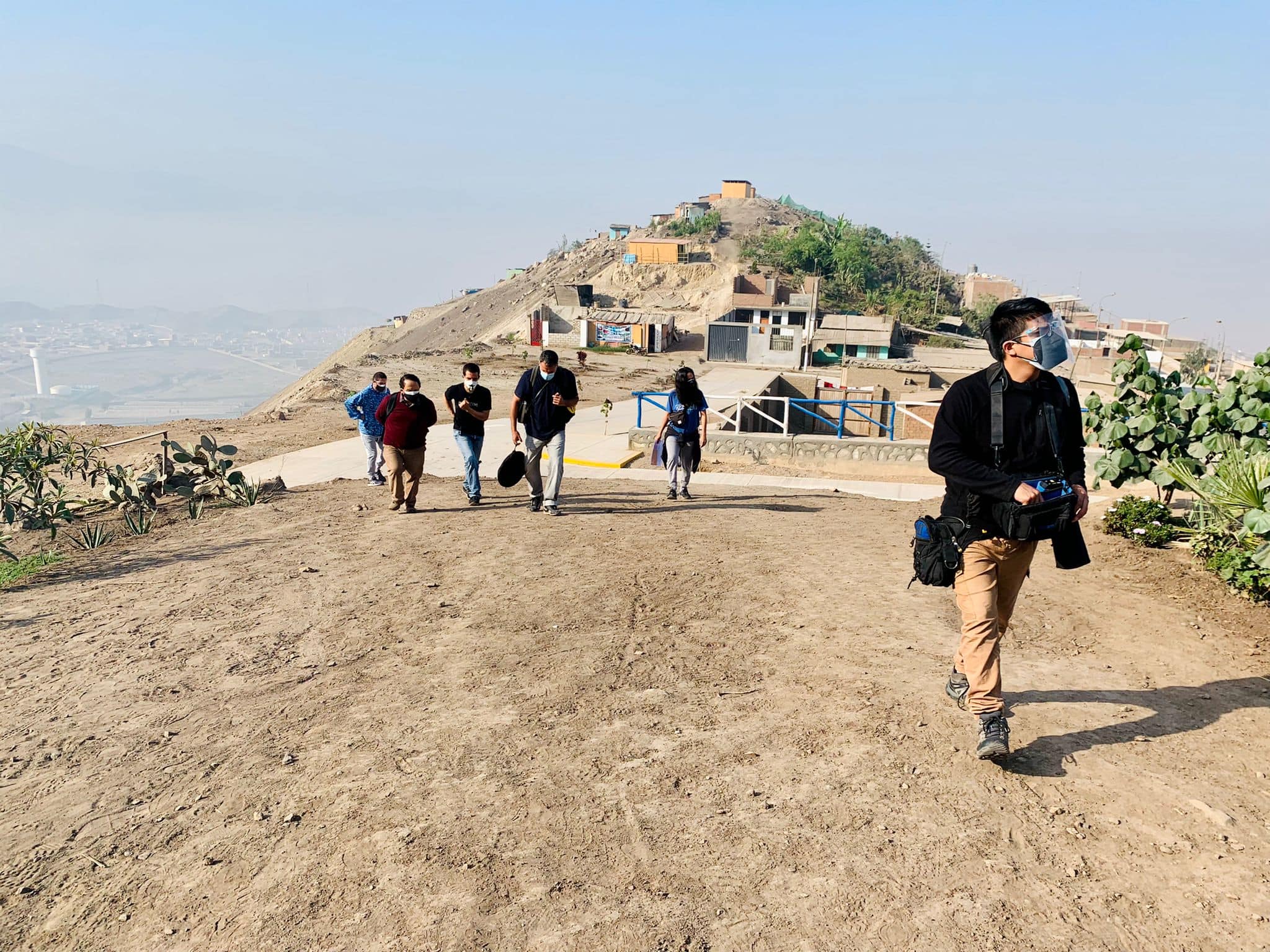
“We visual artists in Peru are still afraid to pick up a camera, go out, and record what is happening right now, which is unique. The images of protests that we have seen in these weeks do not have to remain as mere records for networks. They can leap: by placing them in an appropriate context and language, for me, they become cinema.”
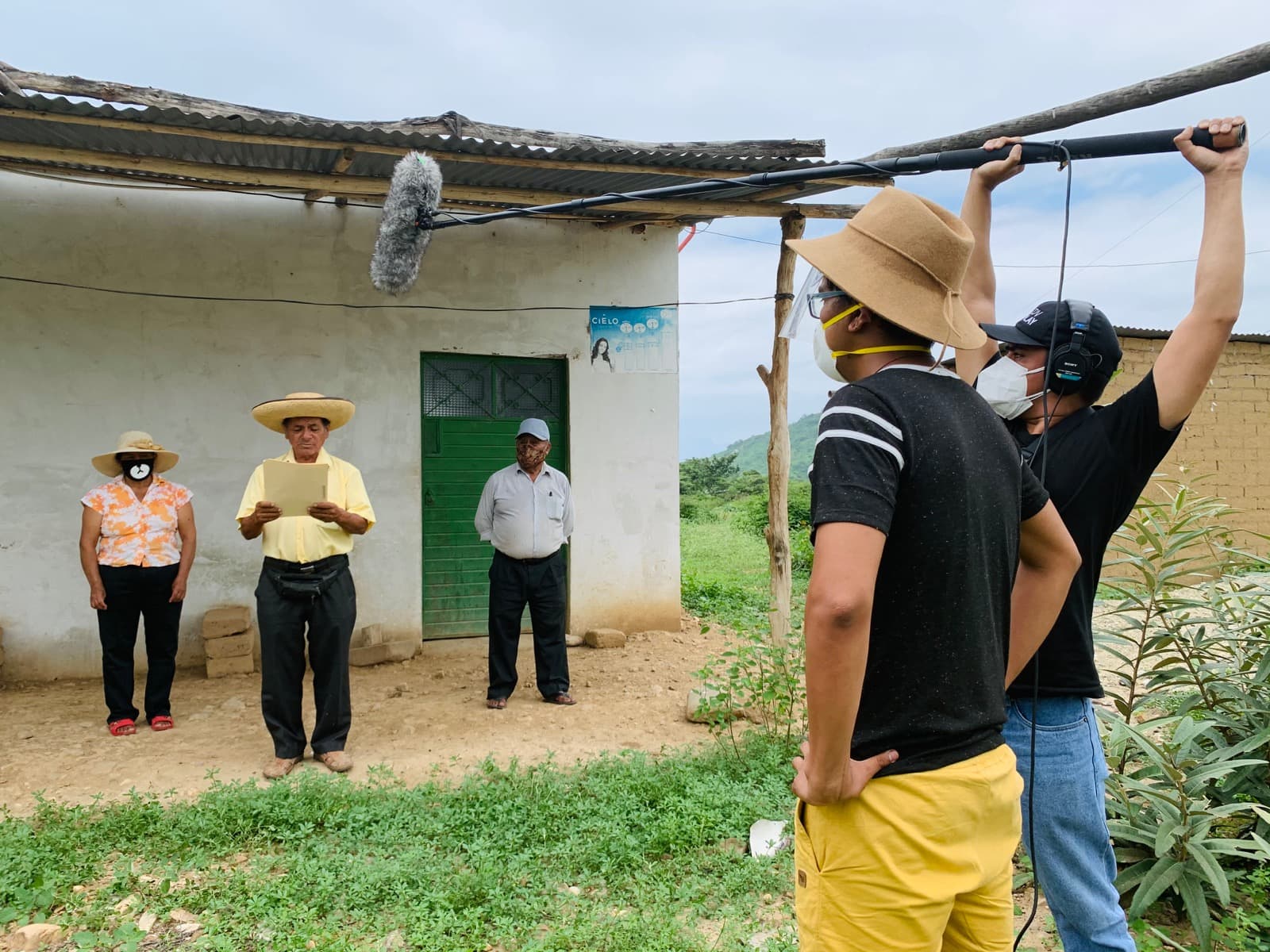
Community leader Juan de Dios Carrasco Fernández reads an excerpt from the play Adiós Ayacucho by Miguel Rubio for the Yuyachkani group in 1990. This adaptation of the book of the same name by Julio Ortega narrates the last day of peasant leader Alfonso Cánepa, who disappeared and was murdered in the 1980s.
What kind of political cinema has served as a reference in your work as a documentary filmmaker and in this short film?
I am very interested in the films of Glauber Rocha, the founder of Brazil’s Cinema Novo. Not only because his work was openly political, in the sense that it showed the social contrasts of his country, but also because he gave a lot of space to fantasy, to a visually poetic and fascinating cinematographic language.
But, on the other hand, I am also interested in more pamphleteering films, what we call a cinema of urgency. I think of the Argentinean cinema of the Grupo Liberación, for example, movies like La Hora de Los Hornos or the cinema made in Chile during the dictatorship. It is a cinema that emerges in the most explosive moments, made in the streets. These films are like graffiti, spontaneous reactions to which it makes no sense to demand subtlety in the analysis of the situation but rather respond to a need to shout and expose what is happening clearly, and unambiguously.
All that Latin American political cinema of the late sixties, from Cuba, Argentina, Chile, and Brazil, makes me slightly envious. In Peru, we have the Chaski group in the eighties, but they are films that still need to be remembered. In general, films that deal with conflicts take many years to make, think about them, and accept them. I am interested in keeping that other door open so that there is space for films that react quickly to what is happening.
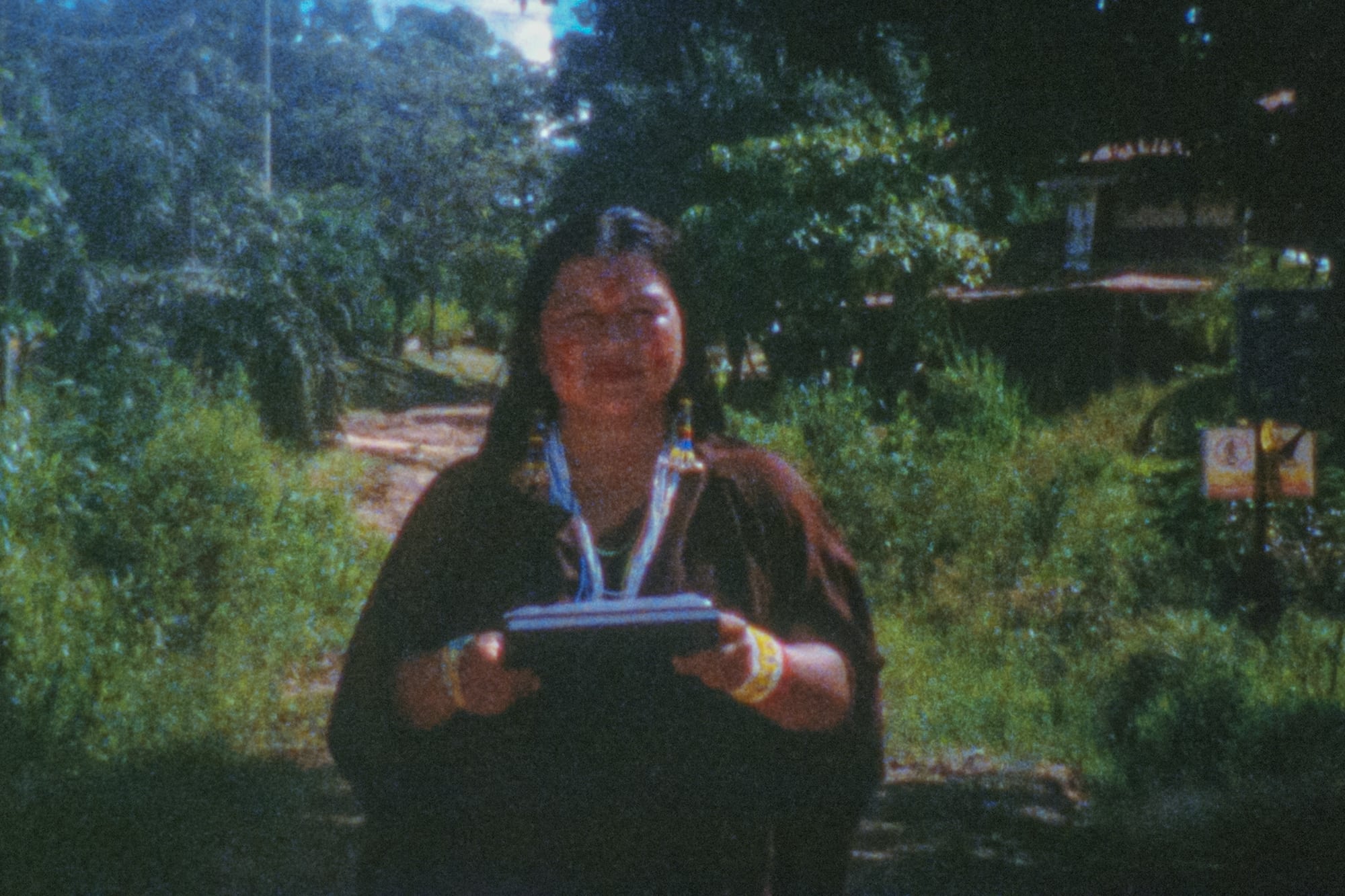
Environmental leader Diana Rios Rengifo reads the last letters written by Edwin Chota, Amazon forest defender, murdered in 2014.
For example, after the Baguazo, I made two works: one called La Espera, a documentary that responds to what happened with great urgency, and a short film called Solo te Puedo Mostrar el Color, which reached the Berlinale and is something closer to a video essay, where the power of archival images creates an entanglement that is a visual reflection of that chaos that we do not quite understand, of contained violence, but that we do not manage to handle.
So I feel comfortable with both possibilities. And El Polvo ya no Nubla Nuestros Ojos is a work in which both things meet for the first time: the urgent and the visual reflection. I am very grateful for what we have achieved in the collective process.
Do you think political cinema in Peru generally lacks a sense of urgency?
I believe both types of cinema are necessary: the one that reflects on violence over time, analyzing its consequences over decades and the one that responds to crises quickly. In Peru, I feel that spontaneous cinema, the one that takes to the streets, is still viewed with suspicion. It is absurd because much of the great cinema, not just political cinema, has been made that way since the Nouvelle Vague.
Visual artists, videographers, or whatever we want to call ourselves, still have a fear in Peru of picking up a camera, going out, and documenting what is happening right now, which is something unique. The protest images we have seen in recent weeks do not have to remain mere records for social media. They can leap: by placing them in an appropriate context and language, they become cinema to me. And it is essential cinema, which will be part of the history of Peru, that we are writing through audiovisual means.
Some of the testimonies included in the short film account for quite violent scenes. But the fact that we do not directly see the violence, but rather it is narrated, gives the images a special power. How did you arrive at this staging?
The idea comes from the evocative power of voice and word. Reading words written in a letter or text message, or spoken in a phone call, can evoke a hundred different situations in the viewer’s mind. If we saw the person who was the victim of violence saying those words directly to the camera, it would be too direct. And since the texts’ content is so strong, we wanted to modulate the blow the film would deliver.
Words have the power to attract presences and ghosts. In the short film, there is a Yuyachkani theater collective text about a spirit that demands what happened to his violated body from the President of Peru. In another scene, we see Gabriela Wiener reading her text about the violence she suffered at the hands of different men. Gabriela’s presence in that scene is extraordinary: she almost disappears in a strong backlight. We wanted to give that power to sound, to the evocation of words, to bring us all the ghosts we try to forget.
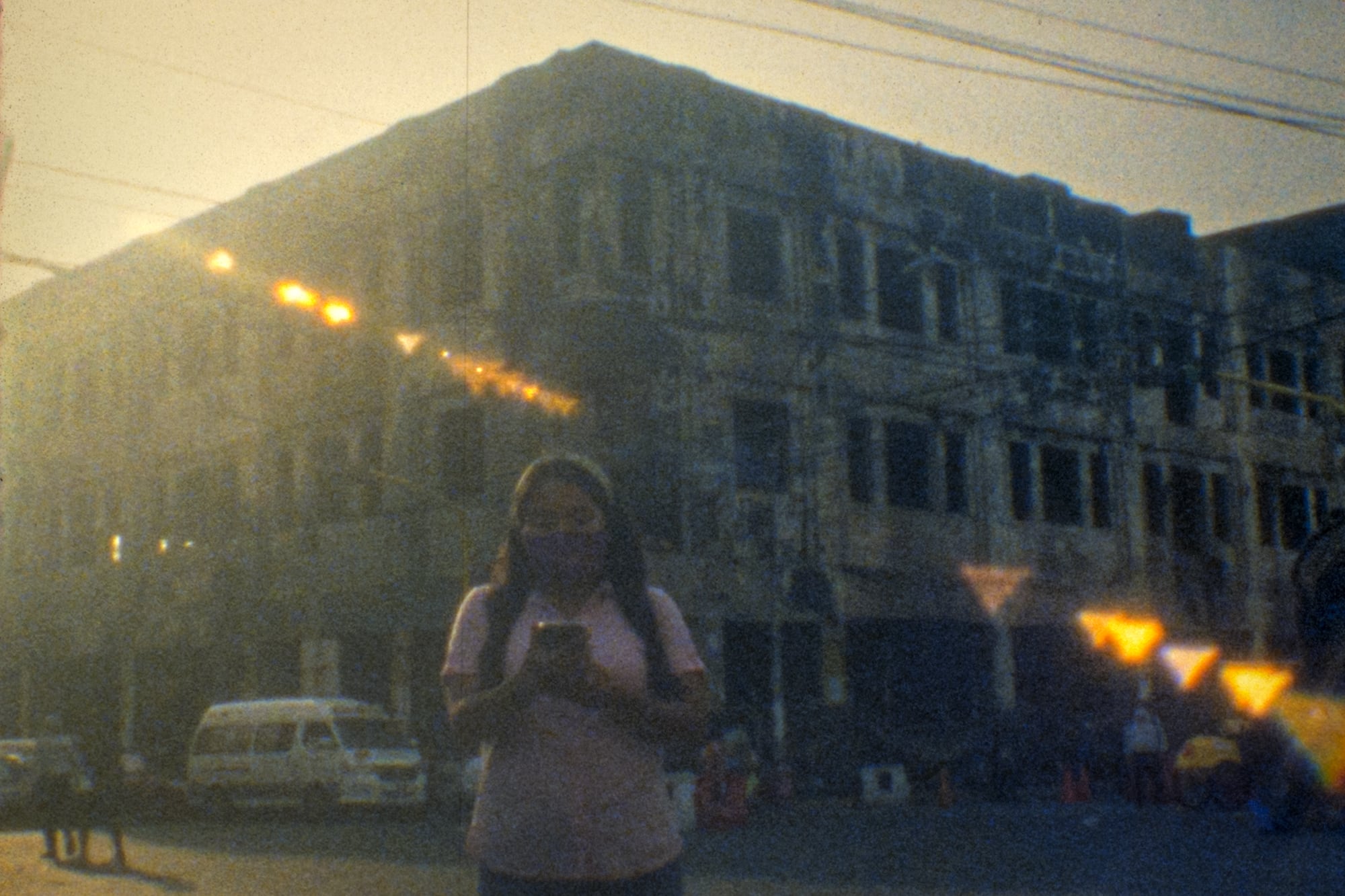
Labor rights fighter Whinney Farithe Ramos Luque reads conversations between Jovi Herrera and his family members during the fire at the Las Malvinas shopping arcade in 2017. In that incident, Herrera and three other workers locked inside the premises died.
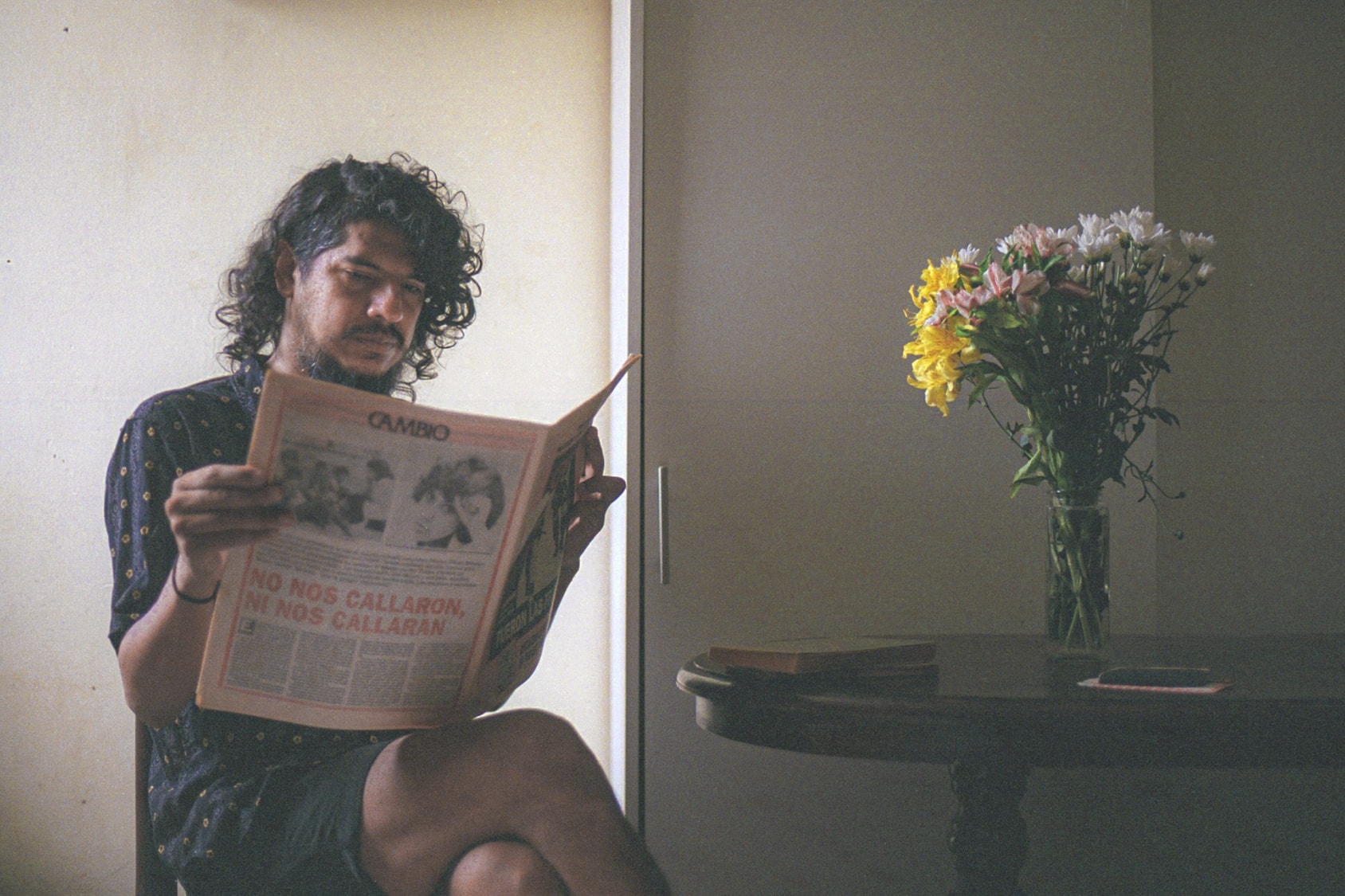
Artist Igor Alfaro Méndez reads the article Uchuraccay: ¡Ni olvido ni perdón! (1990) written by his mother, journalist Melissa Alfaro Méndez. She died due to a dynamite attack on her, the authorship of which is still under investigation.
Although the collective made the short film before the social outbreak began in Peru, it seems to respond to this situation, presenting an accumulation of testimonies that give an account of all those unresolved problems at the center of the protests: racism, discrimination, and centralism, among others. Those problems were kind of under the table, but society can no longer ignore them.
What we were looking for, obviously, was not to give an answer to a current conflict but to go deeper into the problems that are behind this situation. There are notorious problems relegated from public discussions, such as labor rights or the assassination of indigenous leaders. These are issues that have been dragging on for decades, if not centuries, in some cases. We do not finish resolving all the forgetfulness and injustices because we are preoccupied with the moment’s crisis.
The demonstrators’ demands indeed have to do with the government of Dina Boluarte, but they framed in a much bigger claim. Why the rejection against Boluarte? Why do many people feel that Pedro Castillo is still their president? There is an issue of representation, deception, and feeling betrayed by the political class, which is not new but has been present for a long time.
But what is happening in these weeks pushes us to think that there is no turning back, that something has awakened, and that the political class in Lima cannot simply ignore it. It is no longer a conjunctural crisis. There has finally been an uprising that questions everything and can only be resolved through dialogue. Therefore, I wish to have a Congress that can address these issues: we talk about violence, indigenous communities, and labor rights. To avoid getting stuck in the political debate of the day.
The people who are mobilizing have left their cities, neighborhoods, and communities to go to Lima because they need to discuss this, and they need representatives up to the task. Therefore, the first step towards a solution is that political leaders, and we also as citizens, raise these issues and end the confrontation. We need to listen to what is happening in other geographies. And that is what this film seeks to do.
One of the most beautiful texts in El Polvo ya no Nubla Nuestros Ojos deals with the struggle for LGBT rights, one of the most silenced struggles in the explosive context the country is going through, and yet it is central to the struggle for civil rights.
That text is from Vero Ferrari, who is part of the collective, and the person reading it is her daughter. It’s an extraordinary text because the questions it raises are not only about the struggles of LGBT collectives but also about childhood. It deals with a reality that is doubly forgotten. And there is a beautiful part that mentions Gio Infante, an essential activist of the movement who has already passed away. Having references like Gio is crucial because it motivates many more people to stand up and discuss these issues. And that is what El Polvo ya no Nubla Nuestros Ojos seeks to address these demands or, instead, these silences in our society. Silences that we hope will be broken with these readings.


